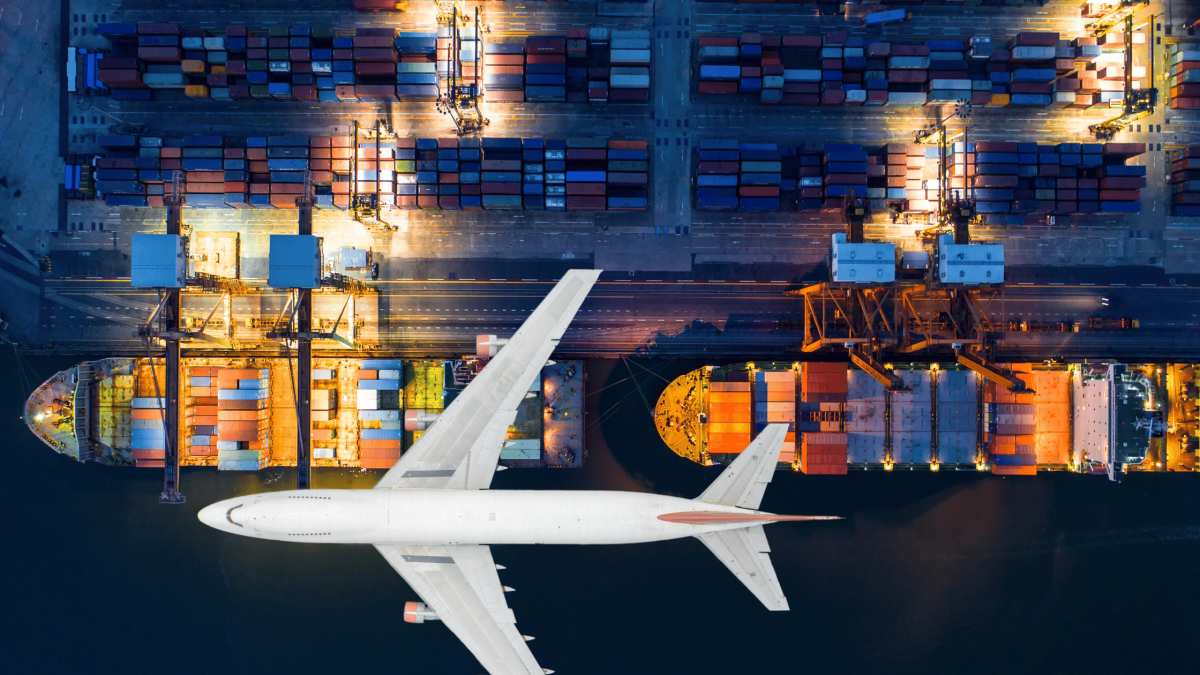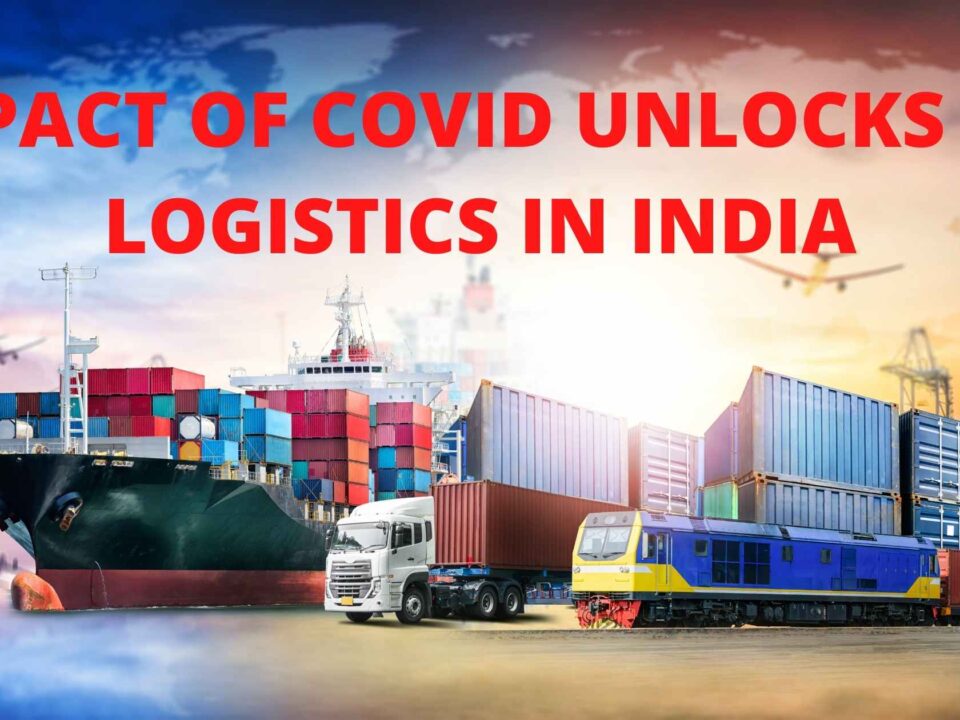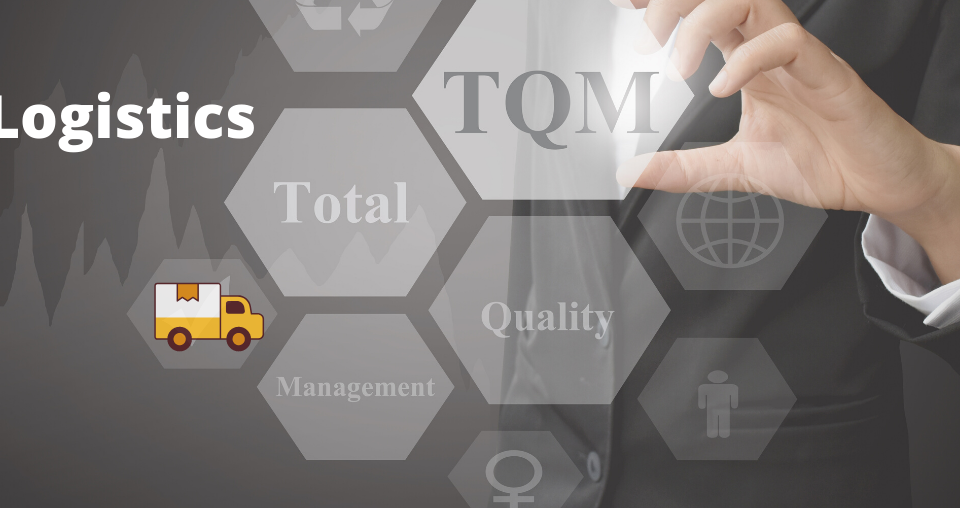WHAT IS LOGISTICS

ISO CERTIFICATION IN LOGISTICS
June 22, 2020
EXPECTED CHANGES IN THE GLOBAL SUPPLY CHANGE POST COVID-19
July 13, 2020Everything you need to know about logistics.
Logistics is popularly known as the procedure of synchronizing and relocating resources from one site to storing such equipment like food, fluids, inventories, raw material, and people, at a chosen location. It was initially a military term used to characterize how the armed forces acquired, stored and shifted materials and services.
Logistics is the handling of the rhythm of details between the time of origin and utilization in the supply sequence and business sense, in order to meet the specifications of customers or businesses. The logistics of the above assets entail the assimilation of production, packaging, warehousing, transit, safety, managing of materials and database flow.
How does a Logistics company work?
Logistics management emphasizes on the quality and efficient management of everyday operations related to the manufacture of finished products for the client.
This management forms the basis of distribution chain strategy and plans, manages and regulates the reliable, sustainable forward and reverse movement and storing of products.
As discussed, this procedure occurs between the origin point and the point of utilization in order to satisfy customer-set requirements.
The main goal of logistics operations is to assign, at the appropriate time, the right quantity of a resource or information.
It also ensures that, when supplying it to the right internal or external client, it arrives to the fixed destination in a proper state.
What is logistics
It is important to have an efficient production process and logistical processes, as they minimize costs and sustain and improve efficiency. Subpar logistics, on the flip side, result in late shipments, failure to achieve customer needs and, inevitably, the corporation crumbling. Consumers increasingly expect best services, and this has motivated key players in the production process to strive to provide quick, reliable and efficient services.
This is the duty of logistics management to ensure that this goal materializes and that client satisfaction is created.
Management of logistics is also essential for constructing exposure in the supply chain of any business. As historical data is processed and the flow of products is monitored in real-time by excellent transportation management systems (TMS), logistics uses an algorithm to optimize processes and prevent unnecessary interruptions.
Correspondingly, the transparency of the supply chain provides room for significant operating efficiency gains. Appropriate logistics management techniques raise profitability and offer market leverage over incoming cargo; enable the reverse supply of materials to be organized; maintain inventory at optimum levels; and ensure that the freight travels on the appropriate modes of transport.
These factors could lead to cost-cutting. The Transformation of Logistics Management Sinc
e the 1960s it has been said that the idea of business logistics has changed. As the need to provide products and services to businesses has increased over the years, so has the worldwide expansion of supply chains along with professionals who have evolved in their specialty & competence.
As well as heading further into the modern world, the intricacy of logistics processes has led to the formation of logistics software solutions and started businesses that focus exclusively on advancing resource movement along the distribution chain.

Manufacturers have even gotten to the stage where they choose to outsource the leadership of their logistics to experts; a field that is dominated by Third Party Logistics (3PLs) providers.
Digitized supply chains have provided consumers with perspective and accountability in the logistics process, where consultation on their transactions has been enabled. Every customer now thinks they are in charge of the procedure, which ultimately leads to customer satisfaction; every company should aim for this aspect. Innovation has provided various advantages and prospects in the logistics and supply chain field, including high tech data analytics, usability ease, information security, cost savings, multi – platform assimilation, real-time tracking and electronic processes.
When talking about logistics management teaming up with technologies, software dominates the discussion since logistics operations cannot be fully integrated without the required software systems. Logistics Management Software helps to schedule, execute, and monitor the distribution and control of products, services, and related information. This maximizes this operation, leading to an improved end result by increasing efficiency, visibility, connectivity and productivity gains in the operation.
What is the difference between a truck company and a logistics company?
Few organisations can offer to invest their funds to handle the whole logistical procedure of relocating their goods to every end user from their warehouse. It is unfeasible to charge the gear, workforce and facilities to warehouse, transit and deliver at varying frequencies to several venues while keeping delivery times in pace.
In this era of just-in-time inventory management and overnight shipments, the philosophy and culture of logistics management is an industrial sector on its own. So many kinds of logistics firms have modified to support demand, some specialised in one stage of the supply chain while some do even more. Sometimes the lack of seamlessness leads to disjointed attempts that eventually end in delays, extra handling, and frustration.
The critical technique for a supplier is to guarantee the goods reaches the exact location, intact, and on schedule at the cheapest cost.
The firms which play a role in the transport of products include:
Freight companies
Freight forwarders
Carriers
3rd Party Logistics (3PL) Providers
What does a logistics company do?
Supply
Supply management works with the preparation and scheduling at a particular time of the materials required at a particular location to sustain production. Supply logistics must include materials storage and transportation together with procedures in place to determine the supply level at various stages of processing; ensuring that the materials flow coincides with the needs.
Distribution
Distribution includes controlling how a commodity distributed and packaged is then shipped out to the places where it is required. The method involves issue of material flow (loading, unpacking and transit), stock monitoring, and responsibility (indicating how and by whom the inventory has been used).
Production
This kind of logistics management supervises the steps in which dispersed goods are combined into a product. This may include management of a manufacturing or assembly technique and the logistics of managing storage space regions in the event of projects such as defense machinery production. Production planning in construction may require the positioning of materials to coincide with the building process is taking place.
Reverse
Reverse logistics management manages the retrieval of equipment and labour from the assembly production process. For instance, in the logistics management of a construction process, reverse logistics aims to extract surplus product and reabsorb the equipment into a reserve supply.
Many Logistics companies on the home turf, i.e., Kolkata provide highly specialised logistics services. Jayesh Logistics is one such, which provides logistics services in Kolkata, and is employing the most up-to-date methodologies in its functioning. Jayesh Logistics specialises in full truck load services, breakbulk cargo, freight forwarding and many other logistics services. They provide logistics services from Kolkata to other places like Nepal. Jayesh Logistics is not to be confused with trucking services in Kolkata. Being a truck transporter is just one of its many functions. Jayesh logistics is the one shop stop for all your Logistical needs in Kolkata.





1 Comment
It’s really a great and useful piece of info. I’m glad that you just shared this helpful info with us.
Please keep us up to date like this. Thank you for sharing.